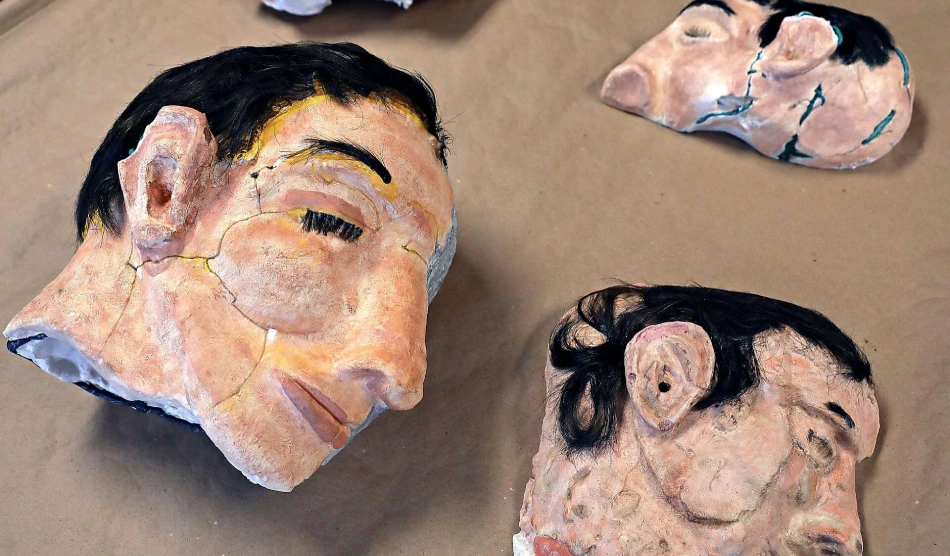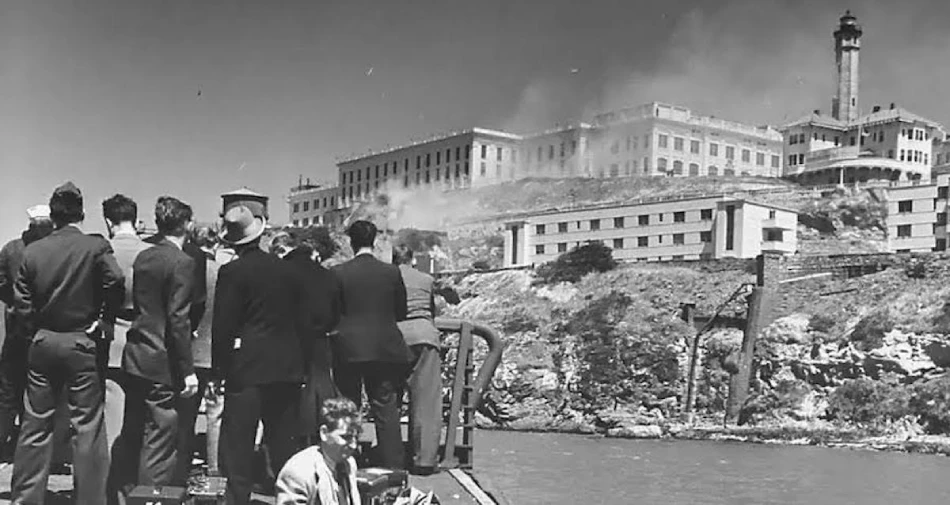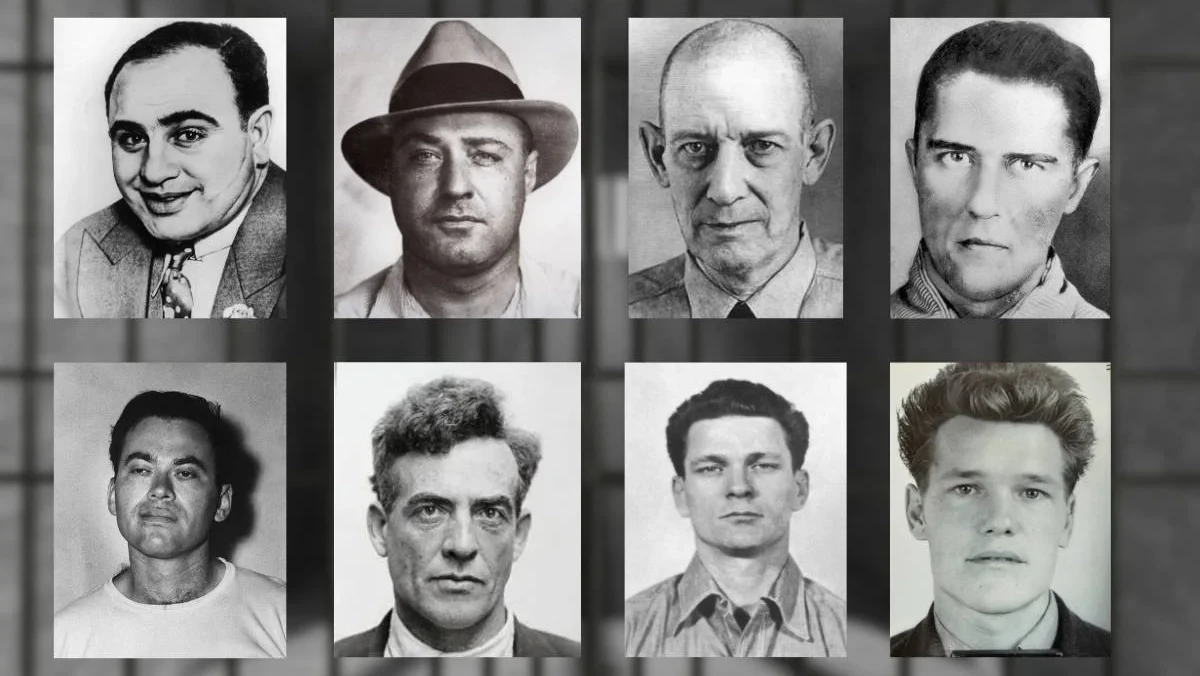Escape attempts from Alcatraz prison: The untold tales

Alcatraz, often called “The Rock,” was infamous for being a prison from which no one could escape.
Located on an island in the middle of San Francisco Bay, it was considered America’s most secure facility, housing some of the country’s most dangerous criminals.
Despite its tough reputation, many inmates attempted to break free.
There were 14 separate escape attempts involving 36 different men over the years.
This article uncovers some unforgettable escape attempts and the prisoners involved in them.
Why was Alcatraz so tough to escape?

Alcatraz was made to be a very difficult place to leave.
- Its location on an island in the middle of San Francisco Bay isolated it from the mainland.
- The waters around the island were cold and rough, with strong currents. The temperature drops to around 12 degrees Celsius in winter.
- There were steep cliffs around the island.
- Prison guards were known to be unrelenting, and conditions inside were harsh.
- The prison had tougher iron bars and strategically placed guard towers.
- There were strict rules, including multiple prisoner checks each day.
Before becoming a federal prison in 1934, Alcatraz had been a naval defense fort and then a military prison. When the US government was fighting against organized crime in the 1930s, the Department of Justice took over Alcatraz to hold the most troublesome convicts. History of Alcatraz
Summary of all escape attempts from Alcatraz
| Date | Inmates Involved | Outcome & Details |
| April 27, 1936 | Joseph Bowers | Shot while climbing a fence. Died from injuries. |
| December 16, 1937 | Theodore Cole and Ralph Roe | Escaped via window bars, presumed drowned in a storm. |
| May 23, 1938 | Escaped via cell bars, Barker was shot and died, and others were caught. | Escaped via cell bars, Barker was shot and died, and others were caught. |
| January 13, 1939 | Arthur ‘Doc’ Barker, William Martin, Rufus McCain, Henri Young, Dale Stamphill | Escaped via cell bars, Barker shot and died, others caught. |
| May 21, 1941 | Joe Cretzer, Sam Shockley, Arnold Kyle, Lloyd Barkdoll | Took guards hostage but failed to escape, gave up. |
| September 15, 1941 | John Richard Bayless | Attempted escape during rubbish duty but gave up. |
| April 14, 1943 | James Boarman, Harold Brest, Floyd Hamilton, Fred Hunter | Escaped, but two guards raised alarms. Boarman shot and presumed lost. Hamilton was found two days later. |
| August 7, 1943 | Huron Ted Walters | Attempted escape from laundry, caught at shoreline. |
| July 31, 1945 | John K. Giles | Tried to escape in a fake army uniform, caught at Angel Island. |
| May 2-4, 1946 | Bernard Coy, Marvin Hubbard, Joseph Cretzer, Sam Shockley, Miran Thompson, Clarence Carnes | The “Battle of Alcatraz” – violent standoff, 2 guards and 3 prisoners died. |
| July 23, 1956 | Floyd Wilson | Disappeared, found hiding among rocks after 12 hours. |
| September 29, 1958 | Aaron Burgett, Clyde Johnson | Attempted to swim, Johnson caught, Burgett drowned. |
| June 11, 1962 | Frank Morris, John Anglin, Clarence Anglin | Famous escape, believed to have drowned, but never confirmed. |
| December 16, 1962 | John Paul Scott, Darl Lee Parker | Bent kitchen bars and swam, Parker found on a rock, Scott reached Golden Gate Bridge but was exhausted. |
Famous criminals like Al Capone, Mickey Cohen, and George “Machine Gun” Kelly were sent there. Even Robert Stroud, known as the “Birdman of Alcatraz”, was an inmate. The BBC described these men as “too vicious and troublesome to be held in an ordinary jail”. Inmates of Alcatraz
The Great Escape: Frank Morris and the Anglin Brothers (June 1962)

The Great Escape from Alcatraz in June 1962 is one of history’s most famous prison break attempts.
The escape involved Frank Morris and brothers John and Clarence Anglin, who meticulously planned their escape over several months.
They used stolen spoons and a vacuum cleaner motor to enlarge the air vents in their cells, creating a passage to an unguarded utility corridor. From there, they accessed a secret workshop where they built a makeshift raft from stolen raincoats and crafted paddles from plywood.
To hide their absence, the trio created lifelike dummy heads from soap, toothpaste, and toilet paper, which they placed in their beds to deceive the guards.
On the night of June 11, 1962, they climbed through the vents, crossed the prison rooftop, scaled two barbed wire fences, and reached the island’s shoreline. They inflated their raft and set off into the cold waters of San Francisco Bay.
The next morning, the guards discovered the dummy heads and a massive search began.
Despite finding some of their belongings and remnants of the raft, the men were never seen again.
Official reports suggest they drowned, but theories and unconfirmed sightings persist, leaving the escape’s outcome a mystery to this day.
The “Battle of Alcatraz” (1946)

In 1946, a violent escape attempt, known as the “Battle of Alcatraz,” occurred when six prisoners attempted to break out of the prison by seizing control of a cell block. The prisoners took two guards hostage, hoping to access the keys to the yard. A three-day standoff ensued, with guards and U.S. Marines involved in a violent confrontation. Ultimately, two guards and three prisoners were killed during the ordeal. The remaining escapees were captured, and the event highlighted the extreme lengths some prisoners would go to escape the infamous prison.
Escape from Alcatraz, a 1979 American prison drama film directed and produced by Don Siegel, is based on this escape attempt.
John Paul Scott (1962)

In 1962, John Paul Scott made a remarkable escape from Alcatraz, becoming the only documented inmate to survive the frigid waters of San Francisco Bay. After bending the bars on a kitchen window, Scott swam across the bay to reach the mainland. Exhausted and hypothermic, he was found on a rock near the Golden Gate Bridge. Though Scott managed to reach the shore, his escape failed, as he was soon captured. His attempt was notable for demonstrating that survival across the cold waters was possible, though extremely dangerous.
